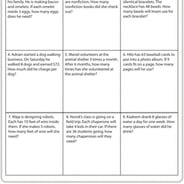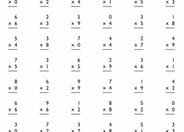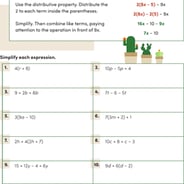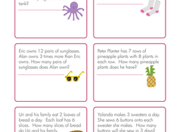- Worksheets
- Games
- Lesson Plans
- Workbooks
- Exercises
- Science Projects
- Skills Progression
- More
Search Multiplication Educational Resources
764 filtered results
764 filtered results
Multiplication
Sort by

Fourth Grade Independent Study Packet - Week 1
Workbook
Fourth Grade Independent Study Packet - Week 1
This independent study packet features 5 days of independent activities in reading, writing, math, science, and social studies for fourth grade. This is week 1 of the set.
4th grade
Reading & Writing
Workbook

Multiplication 1
Guided Lesson
Multiplication 1
Third grade is the year of multiplication. Though it was most likely introduced to kids in second grade, third grade is when kids are tasked with mastering their times tables and developing a stronger understanding of this key operation. This guided lesson in understanding multiplication can help give third graders a leg up. For even more practice, consider downloading the recommended multiplication worksheets that accompany the lesson.
3rd grade
Math
Guided Lesson

Multiplication & Division Word Problems Practice
Worksheet
Multiplication & Division Word Problems Practice
This resource gives your students practice with multiplication and division word problems. This worksheet can be used with the Stepping Through Multiplication & Division Word Problems lesson.
3rd grade
Math
Worksheet





















